Fringe Review: Powers & Perils from ZDL's blog
Unfortunately the '80s had its darker side as well. A lot of very stupid things were done in that era and it would be remiss of me not to document some of them. Further, to show I'm capable of more than twee paeans to my favourite games, I thought it time to show, too, what a negative review would look like.
And make no mistake, this review will be unrelentingly negative!
Avalon Hill
The Avalon Hill Game Company (AH) was a powerhouse in board gaming, especially wargaming, with a history stretching back to the early 1950s. If you play board wargames in particular, even those not made by AH, you owe a debt to this one-time juggernaut. Many of the standard things that identify wargames--hex grids, stochastic combat results, etc.--were a result of their innovation over the years and it is rare that a wargame can be found which doesn't trace its ancestry to something invented at AH.
In the 1970s, role-playing games started to get introduced and in the late 1970s they took off in ways that surprised hardcore wargamers. In the 1980s, when it became clear that RPGs were not going to be going away, wargames publishers started looking around for games to publish in this new genre with varying degrees of success. Simulations Publications, Inc (SPI) published, for example, Dragonquest and Universe, fantasy and science fiction games respectively to mixed success. (I personally liked both games, but Universe in particular was rather gratuitously complicated in ways that weren't needed. I could never have run either, but as a player I enjoyed both.)
AH was no exception to this. They wanted to publish RPGs and in the end they wound up publishing three. They published the third edition of Runequest (and I am one of, perhaps, five people in the entire world who liked their version of Runequest better than the previous two editions by far) to mixed reviews. They published an intriguing-in-principle but deeply-flawed-in-execution game called Lords of Creation, and they published today's little gem: Powers & Perils. (Technically the James Bond 007 RPG was also an AH property, but it was published by a wholly-owned subsidiary and I don't consider it part of AH canon proper.)
Powers & Perils (P&P) should have been a success. It was designed by Richard Snider, who is one of the godfathers of RPGs. It was published by a games company known for quality product. So what went wrong? Stories abound, and I'm not sure how much stock to put into specific details. The general gist seems to be that AH didn't understand RPGs and thus how to publish them, the designer bit off far more than he had the skills to chew, and some economic and time pressures led to overly-hasty publication.
But that's not enough. This game is bad. Phenomenally bad. Unremittingly bad. I realize it has die-hard fans, but there's die-hard fans of Hudson Hawk too, so that means nothing. So let's delve inside and find out how and, possibly, why it was so bad. Out of courtesy to the designer, I'm going to be reviewing his second edition rules as published by what appears to be the P&P fan club. Even with these corrections and updates the game is still an epic grade of disaster.
Packaging
The game, at original publication, was a standard-sized AH box, like Panzer Blitz and other such wargames, that contained five rules and settings booklets. While the box art was actually pretty nice for its era, the first impression upon opening that box was already a sinking sensation. As with all of the other AH RPGs, the rules were in thick, staple-bound booklets with no covers. They were published as wargames rules would be, only several orders of magnitude thicker. These books were incredibly flimsy and fragile and it was quite common to have people use a variety of techniques to deal with pages falling off the binding. (The person I played with actually manually sewed the pages after using an awl to punch holes through the spine, rendering the staples unnecessary.)
The five booklets were, in order (numbered from one to five) The Character Book, The Combat and Magic Book, The Book of Encounters and Creatures, The Book of Treasure, and The Book of the Realms. The first two are the rules for the game proper, the next two provide rules used mainly in the running of adventures (encounters, creatures, treasures, etc.), and the final book deals with the setting (the so-called Perilous Lands). Internal artwork was generally competent, mostly black-and-white line drawing, with much of it feeling like, although apparently not actually being, purchased clip art.
(The specific version I'm reviewing is a PDF-only copy that has all five books together in one file.)
Rules
The first warning signs of what's to come start with the table of contents. All twelve pages of it. This is a ludicrous number of pages for a table of contents. I mean who goes to the table of contents of a book to look for individual skills!? Doubly so when the skills are arranged purely alphabetically in each, so looking up a skill is finding the right category (Combat, Magic, Other) and flipping to the right letter. This is even more comical when you realize there's no index. Nothing. Just a three-page (!) list of tables. (That, dear readers, is foreshadowing...)
The game proper then starts with an introduction that ... well, it has a few more warning signs:
"...the Referee should have a general grasp of the system as a whole. For the smooth play of the game, this is crucial where it relates to the Combat, Magic, Encounter and Treasure systems. He should never start his campaign until this is the case."
Yes, this game, in its opening pages, of 471 pages of rules and setting overall, says that you shouldn't even start your campaign until you've properly learned the system. (The fact that this is impossible because there is no system isn't mentioned. This is more foreshadowing...)
The madness continues with a list of abbreviations used in the game. There's 62 of them. And believe me, they will use these abbreviations non-stop, syou you need to know the difference between your MDV, MEL, MEP, ML, MP, MR and all that or you will find the rules impossible to understand.
And it doesn't stop there!
Next are the die codes. "But I already know how to read die codes," you're saying. No. No you don't. I mean sure you'll know what xDy means. D100, D10, D6? No problem. You'll probably have no difficulty figuring out what xDy×z means either. And, though weird, you probably will have no problems sussing (xDy)×(xDy). But then you have these: D2, D2*, D3, D3*, and D4*. You will probably be able to guess that D2 is a D6 where 1-3 is 1 and 4-6 is 2. Similarly D3 is 1-2 is 1, 3-4 is 2, and 5-6 is 3. But then the madness begins. D2* is 1-4 is 1, 5-6 is 2. D3* is 1-3 is 1, 4-5 is 2, and 6 is 3. D4* is D10-based, where 1-4 is 1, 5-7 is 2, 8-9 is 3, and 10/0 is 4.
Why is this here? Why would anybody design a game where you have such strange dice? What purpose does any of it serve!?
A Little Digression
I was not particularly interested in P&P at the time, but a dear friend of mine had bought it (for a to-me ludicrous price--AH's RPGs were grossly overpriced in my books!) and wanted to try. So I did. I played two characters before I decided I would never again even look at the game. The experience was that starkly negative.
My first character was a Faerrie because the party needed a magic user and I wasn't in the room when parts were assigned. After spending five hours (!) making that character, my character lasted for one rolled action in the game before dying. That rolled action? Detecting magic. I botched the spell roll and the result on the feedback table killed my character. Five hours and one action in and it was time to make a new character. The frustration:reward ratio was exceptionally high.
There was no way I was going to go through the pain of another magic-using character this time, so I made a pretty basic human spearman type. That was only two hours (!) of work. Once introduced into the game proper, that character lasted longer than my Faerrie character. Twice as long, in fact. Yes, that's right, that character lasted for two rolled actions in the game. I got one decent spear attack in, then got hit by an arrow that simply flatly killed me. Seven hours total in character generation for a total of three rolled actions in game play proper.
There's a reason why this review is so negative...
Character Generation
Character generation follows a set of ten steps outlined in a nicely cross-referenced box right at the beginning of the character generation section. You choose your race (Humans in two flavours, Elves, Faerries, Dwarfs, Halfbreeds ...)
Race
And already we have some hinky '80s stuff here. Most of the half-breeds are the products of rape. And it's not politely shoved off into the background like D&D's half-orcs. No, this is pretty much in your face:
"Where the parent is inimical, the character is always sired by a non-human father. In most cases, the mother dies giving birth to him and he is fostered to another human family."
This is pretty badly awkward and I'm amazed it's been left in in this 2000s-era new edition. At least its annotated as "optional", though, right?
Less hinky, but still very '80s, we get a hint as to why it's almost impossible to have a complete understanding of the "system" before running a game. Every half-breed, almost, has special powers. Each one is handled differently. Just in the process of selecting your race you have something like a dozen special-case rules.
Characteristics
Anyway, back to the process. You then generate your characteristics.
And another interjection. I owe Iron Crown Enterprises an apology. I always thought their Rolemaster (RM) system of current and maximum stats was unwieldy and a bit silly. P&P is orders of magnitude more unwieldy.
Characteristics are Strength, Stamina, Dexterity, Agility, Intelligence, Will, Eloquence, Empathy, Constitution, and Appearance. These are all pretty much what you'd expect. (Remember that list of abbreviations mentioned earlier? Each stat has its own, but none of them are listed in that opening list. We're at 72 abbreviations and counting...) Constitution and Appearance are "non-modifiable" and the obvious ones are physical and mental characteristics.
Each characteristic has a "native ability", a set of "multipliers" assigned by players (minimum 1.5, maximum 4) which are then used to determine the "maximum ability". Each characteristic is generated by rolling 2d10 and adding modifiers by race and gender with a minimum "native ability" of 1. Multipliers are assigned first by rolling 2D6+14 (interestingly, the notation xDy+z isn't outlined in the dice codes section...) and then spreading that sum over the physical and mental characteristics (i.e. not Constitution and Appearance). Constitution and Appearance are given separate rolls by race (half-breeds as humans). The text says you need to modify by gender too, but there's nothing on the table provided that mentions gender, so...
Once you have your native ability and your maximum ability, your "current ability" starts at native ability and can then go up by training, magic, experience, etc.
Background
In the background you generate character age, station, height, weight, initial characteristic/skill/money increases, special events, special attributes, and natural talents. These are, naturally, all rolled off of tables with little to no player input. You get what the dice serve up, sensible or not, usable or not. This is very old-school gaming in that regard which, in simpler games like AD&D was fine, but in a game like this is just annoying.
In all fairness, though, when used, this does give you a pretty decent background for your character. It just may not be one you like.
Calculation after Calculation
Once you've made it this far, it's time to calculate things. Combat value, dodge value, hit point value, damage tolerance, movement rates, portage ability, lifting ability, energy level, mana level, magic defence, casting ability, mana regeneration, poison resistance, food requirement, and influence are all calculated here. Are there formulae aplenty? Yep! And all completely different! Are there tables? You betcha! You may have thought I was exaggerating when I said hours of character generation, but I wasn't.
And oddly, in the middle of calculating all these values, for no apparent organizational reason that I can see beyond "the designer thought of it just then", the rules for healing damage are provided.
Common Knowledge
Background skills and abilities are dealt with here. Each race is handled differently and in many cases, because some races have "innate magic" leaping forward into the magic rules is needed here.
Another Digression
There are 27 tables in just this phase of character generation. This game is crazy with tables, and unlike the aforementioned RM tables, which are mostly the same table used in the same way with different numbers (the weapons attack tables), there is little to nothing in common across them. It is not an accident that the very first supplement for the game was a Book of Tables that compiled all the tables in the five books together (into a booklet the same size as the original five!) which then had extra tables slathered on top to help you navigate the tables in the book!
Skills
And now we enter skills. The rules for skills freely intermix acquiring starting skills, increasing skills, and using skills. Skills come with a "cost to learn" and are measured in "expertise levels". Combat skills are handled differently from magic skills which are handled differently from other skills. This chapter of the book also dramatically beefs up the alphabet soup with all those abbreviations mentioned earlier being thrown around with abandon (and a couple of new ones added for fun).
Over and above the issue of the three categories of skills being handled quite differently, it should be noted too that each skill has its own set of rules as well. Again, remember that in the sage advice given at the beginning you're intended to learn all of the "system" before you even try to run a game, but in truth there is no system. There's a plethora of systems, some of them quite complex in their own right, concealed behind a wall of alphabet soup. Each skill has a different cost to learn, a different cost to increase (some fixed, some varying by the next expertise level), and a different maximum level calculated differently.
And in the middle of all that is setting information. There's rules related to an Assassin's Guild in the middle of the mechanics for the assassin skill.
Random Segue
At this point we can stop worrying about things if we're making a non-magic user. As you can see it's already convoluted and ridiculous just going this far. The game itself seems to think so too because it suddenly goes on to explain "problem solving" (a task resolution system) and "experience and training" (what the name says on the tin).
The game then goes on to talk about "economics and equipment" where you get to buy your starting equipment based on your rolled background and then further into cultures and languages of the setting. This includes "cultural variation" rules for values like height and such, along with favoured weapons (which the first weapon skill to be selected must be), favoured armour, and a bunch of other things like that. Some of which you should have had known while you were generating your character, but hey, why explain things where you need them instead of at random locations in the book?
Combat and Magic
I refuse to do an in-depth review of these. This is a hugely complicated set of rules filled to the brim with alphabet soup. And table after table after table after table. In brief you roll percentile dice on a combat table for results like "deadly", "severe", "hit", "shield", and "miss". Each has a different way, naturally, of calculating damage, and rules exist for things like parrying, counter-attacking, dodging, etc. This being an '80s game of the "stupidly complicated" variety, there are naturally (optional) rules for equipment damage.
Movement is divided into "tactical", "grand tactical" and "strategic" scales. And it is in the movement rules that the turn phases for combat are outlined. Not in the combat rules... Alphabet soup abounds as OCVs interact with PMRs and WSBs to somehow turn into something coherent.
Then we reach the magic rules, and if you are creating a magic using character you're in here while you continue making your character. Because why would we put character generation rules in one place?
Before that, though, we suffer through all the rules for using magic (and, oddly, poison). Remember my Faerrie character I mentioned? This is where she died. Magic resolution can be a "success", a "failure", or an "abysmal failure". On my attempt to detect magic, I got an abysmal failure. This prompts a roll on the corresponding table (because of course there's a table!) and, well, it's burned into my memory what I rolled: "The Caster suffers D100 points loss to his Energy Level. If the Energy Level is reduced to zero or less, he is dead."
There is NO scaling of impacts of such failure by the level of magic being used. You fail, you die. Detect Magic or Awesome Spell of World-Ending Doom: same chances of dying stupidly because of a bad botch roll.
Creating magic users comes in two flavours: innate magic users and trained magic users. The key difference is that innate magic users can cast spells without learning, but can also receive training to get the benefits of being a trained magic user. In addition innate magic users can use their "energy level" instead of only their "casting ability" to power the spells, but this is potentially quite dangerous.
Trained magic users start off having to roll first to see if they're accepted into a magic path. These magic paths are wizardry, sidh, shadow, shamanism, Kotothi shaman (?!), priesthood, druidism, and witchcraft. Naturally there's tables-o-rama and formulae-a-plenty in the creation of a mage. Each path has completely different rules, of course, because why not? As with skills, there's a massive and long list of spells and these spells are each used completely differently. (Remember, you're supposed to know all of these before you can run a game...)
And the Rest
The rest of the books are pretty straightforward. The Book of Encounters and Creatures is pretty much what it says on the tin. Rules for various kinds of random encounters open the book and then it's page after page after page after page of monster listings in extremely dense shorthand notation. There are some interesting monsters and there are the usual fantasy standbys. D&D-like, a lot of entries are races that are also PC races but have shortened, more cookie-cutter abilities. Overall this is serviceable stuff. This closes out with rules for making your own creatures. Then it's more encounter tables for encounters in civilized spaces. (Why this isn't in the front of the book with the other encounters rules is ... well, the only answer I have left is "it's P&P: what do you expect by now?")
As with the previous book, The Book of Treasure is pretty straightforward as well. It opens with rules for finding treasures in lairs and such before moving into generating the specifics of the found treasures. Then, as before, it lists treasures. Herbs, magical items, poisons, etc. are all provided in a pretty decent list of the kinds of things you'd expect in a fantasy world. Nothing leaps out as exceptionally good nor as exceptionally bad.
The final book details the setting: its cosmology, its mythos, the "realms" (upper, middle, and lower--most character time will be spent in the middle), etc. There is not a lot of detail on the Perilous Lands in here because that belongs to another supplement (also freely downloadable from the same place the rules are available from). It closes out with designer's notes where the game's writer explains what he intended. There is a distinct air of snobbery in here as if the designer thought of his game as a "next level" of gaming for true masters of gaming, but it's muted compared to some games I've read. Some advice provided for character generation should have been in the character generation chapter, however, since there are so many things in characters that can go wrong and the revelations in this section will help make better-balanced and usable characters. (They won't stop you from dying stupidly because of one or two bad die rolls, mind. No, I'm not letting that go and you can't make me!)
Final Thoughts
I've made no secret of my disdain for this game. While it has, here and there, some good ideas (some, indeed, very good!), by and large it is an incoherent mess. There is no "system" here. There are literally hundreds of competing systems with very little rhyme and reason coordinating them. Creating characters is insanely random, and ludicrously time-consuming. This, of course, isn't necessarily a bad thing but for one fact: the combat and magic systems are so prone to lethality that the hours you spend on making characters can (nay, given my experience, will) be wasted.
And even if that by itself wasn't bad enough, the books are written in stream-of-consciousness order. Character generation has rules for healing thrown in the middle. It's then interrupted mid-stream to provide rules for combat and task resolution and magic before it carries on with how to make a magic-using character. Then vital information about how to make characters is buried in the back of the book in the designer's notes. Even something as basic as the encounter systems are split down the middle by a long list of monsters. It's just a complete mess at every level.
That being said, it has its fans. I can't even begin to fathom why, but it does. This game caught some people's fancy to the point that they gathered together all rules, all published supplements, articles, etc. and put them into one place. They even got the designer to come back to it and make a second edition (that utterly failed to fix any of the problems of rules, organization, and clarity). Personally I cannot recommend this game at all, but ... go take a look. Maybe it tickles your fancy. It will only cost you a few minutes of downloading time to get now.






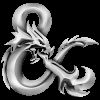

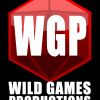
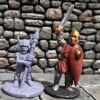

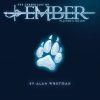

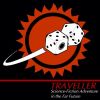


The Wall